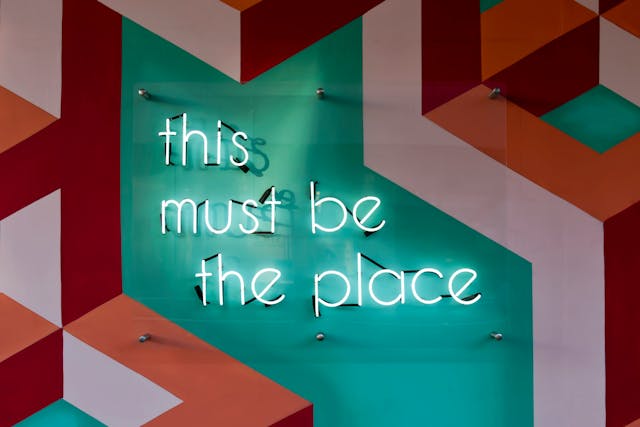Have you ever felt a bit lost in an art gallery, surrounded by paintings that seem like colorful blobs? Or maybe you’ve scrolled through Instagram, wondering how some artists create such stunning work while yours feels…meh.
Don’t worry, you’re not alone! We’ve all experienced that moment, facing a blank canvas or an intricate sculpture, feeling completely clueless about how to even start making sense of it. Developing an “artistic eye” – the ability to truly see and appreciate art – isn’t something that happens overnight.
As an art student, you’re on an exciting journey, one that will transform you from a passive viewer into an active critic capable of dissecting and discussing art with confidence. Just like checking an EssayPro review before making a decision, honing your artistic eye requires careful consideration and exploration.
In this guide, we’ll explore how to truly see art, how to analyze it, and even how to start forming your own unique opinions.
Understanding the Basics: The Elements and Principles of Art
Before we dive into the deep end, let’s make sure we’re all on the same page. Consider the elements and principles of art as the fundamental components that construct any piece of art.
The elements are like the basic ingredients in your artistic kitchen:
- Line. The path of a moving point creating shapes and forms. Think of the graceful curves of a dancer’s body or the sharp angles of a cityscape.
- Shape. A two-dimensional area enclosed by lines. It can be geometric (squares, circles) or organic (the shape of a cloud or a leaf).
- Form. The three-dimensional version of shape, having volume and mass. Sculptures, buildings, even your own body, all have form.
- Color. This is the visual effect we get when light bounces off things. Colors have three main traits: hue (the actual color name, like red or green), value (how light or dark the color is), and intensity (how bright or dull the color appears).
- Texture. This describes the surface of something – what it feels like or what we think it would feel like if we touched it. Textures can be rough, smooth, bumpy, or any other way you can imagine.
- Space. This refers to the area surrounding, separating, and even inside objects. It’s what gives a piece of art a feeling of depth, perspective, and even the illusion of movement.
Now, let’s add some spice to the mix with the principles of art:
- Balance. This refers to how the visual elements are arranged in a piece. Think of it like a seesaw – it can be perfectly balanced on both sides (symmetrical), or it can have different things on each side but still feel stable (asymmetrical).
- Contrast. This is all about the differences you see in a piece of art. It could be the contrast between light and shadow, rough and smooth textures, or large and small shapes. Contrast adds excitement and makes the artwork more interesting to look at.
- Emphasis. The focal point of a piece where the artist wants to draw your attention.
- Movement. The path your eye takes as it travels through the artwork. Artists use lines, shapes, and colors to guide your gaze.
- Pattern. This happens when elements in a piece of art repeat, giving it a feeling of rhythm or a predictable flow.
- Proportion. This is about how the sizes of different things in the artwork compare to each other. It’s like making sure everything is the right size so it looks natural and balanced together.
- Unity. The sense of harmony and wholeness in a composition. All the components come together to form a unified and harmonious composition.
Understanding these basics is like having a map to navigate the world of art. Now, let’s explore how to use this map to develop your artistic eye.
Training Your Eye: Look, Look Again, and Then Look Some More
The first step to becoming an art critic is simple: look at art! A lot of it. Visit museums, galleries, art fairs, and even online platforms.
Don’t just glance at the pieces, though. Really look at them. Be mindful of the finer points, the color palette, the textures, and how the foundational elements and principles are employed within the artwork.
Here are some pointers to maximize your art viewing adventures:
- Take your time. Don’t rush through an exhibition. Select a handful of artworks that pique your interest and dedicate a good amount of time to truly observe them.
- Sketch. Bring a sketchbook and try to capture the essence of a piece through drawing. This will force you to pay close attention to its structure and composition.
- Inquire and investigate. What feelings does the artwork stir within you? What message is the artist aiming to communicate? Which techniques did they employ?
- Compare and contrast. Identify parallels and distinctions between various artworks. This practice will contribute to the development of your own specialized vocabulary for art critique.

Analyzing Art: Going Beyond the Surface
Once you’ve trained your eye to really see art, it’s time to start analyzing it. This is where you go beyond simply describing what you see and start digging deeper into the meaning and context of the artwork.
Here are some crucial factors to take into account when analyzing art.
Context
When did the artist create this work? What was the global climate at that time? Who was the artist, and what experiences shaped their life? Grasping the context can illuminate the artwork’s meaning and importance.
Content
What is the artwork depicting? Is it a portrait, a landscape, or does it lean toward abstraction? Are there any symbols or metaphors employed? Analyzing the content can help you decipher the artist’s message.
Form
In what manner are the fundamental elements and guiding principles of art employed within the artwork? How do they play a role in shaping the overall arrangement and conveying its intended message? Analyzing the form can help you understand the artist’s technique and style.
Interpretation
How does the artwork resonate with you on a personal level? What emotions does it stir within you? What message do you believe the artist is attempting to convey? Remember, there’s no single “right” interpretation. Your own perspective is valuable.

Developing Your Critical Voice
Now comes the exciting part. This is where you move beyond simply analyzing art and start forming your own opinions and judgments.
Here are some tips to help you find your critical voice:
- Be honest. Don’t be afraid to say what you really think, even if it goes against the popular opinion.
- Be specific. Avoid vague language like “good” or “bad.” Employ precise language to articulate the aspects of the artwork that resonate with you or those that don’t.
- Be informed. Back up your opinions with evidence and reasoning. Refer to the context, content, and form of the artwork to support your arguments.
- Maintain an open mind. Be receptive to altering your viewpoint if you come across fresh information or alternative perspectives.
- Demonstrate respect. Even when your opinion clashes with another’s, articulate your disagreement in a courteous and constructive fashion.
Developing your critical voice is an ongoing process. The deeper your involvement with art, the more sophisticated and nuanced your viewpoints will evolve.
Wrapping Up
Becoming an art critic is not about memorizing facts or regurgitating what others have said. It’s about cultivating a deep appreciation for art, training your eye to see beyond the surface, and developing your own perspective.
As you hone your artistic eye, you’ll gain a deeper understanding of the world around you, connect with artists across time and cultures, and unlock a lifelong source of joy and inspiration.